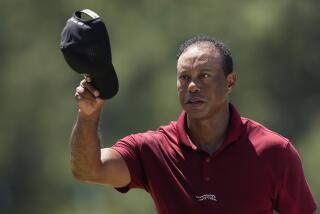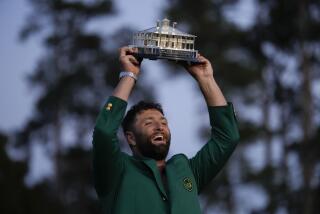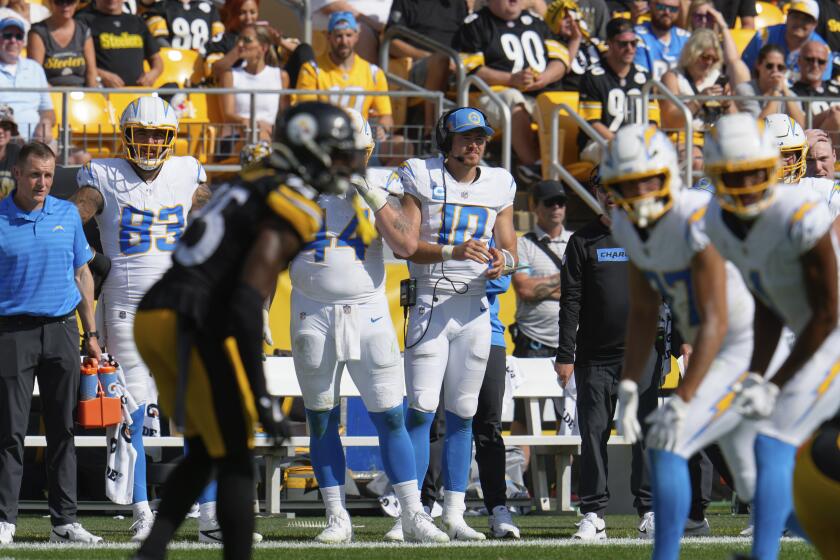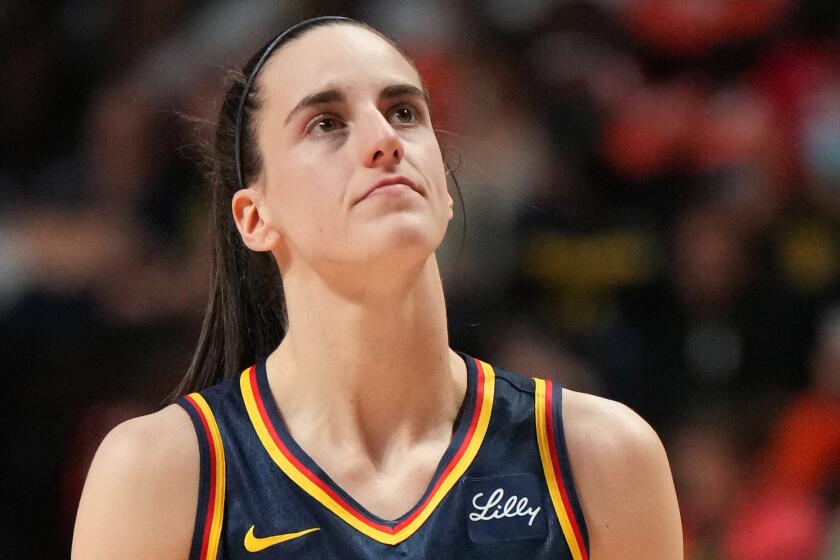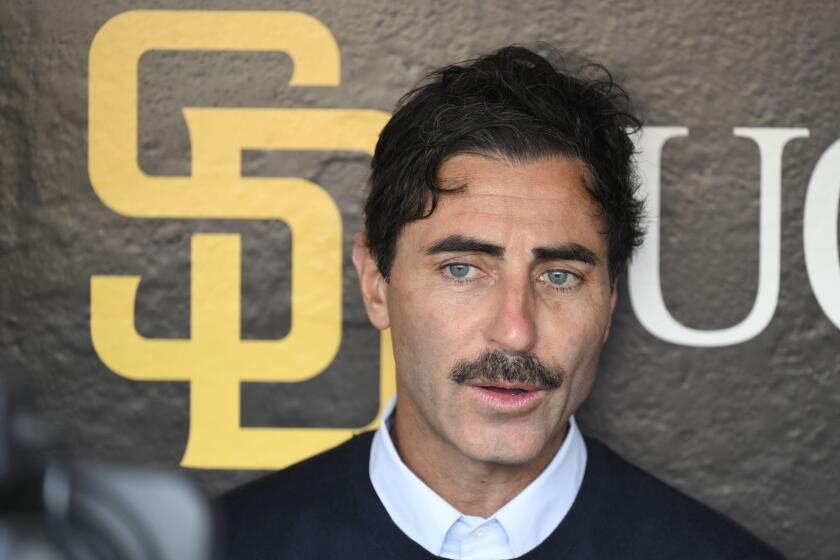The Masters remains a timeless event
From Augusta, Ga.
The Super Bowl has evolved from a funky little football game to a national carnival featuring $1,200 seats.
The Masters still charges $1.50 for a pimento cheese sandwich wrapped in a green baggie.
The NBA Finals has leapt from a quaint playground scrum to a slick marketing vehicle where everything from the shoes to the scorer’s tables are sold.
The Masters contains no advertising, no cellphones, and absolutely no running.
The World Series has morphed from sweet September afternoons to bitter November nights, from short-sleeve shirts to ski masks, from autumn to winter.
The Masters hasn’t moved for 75 years.
On a Wednesday afternoon before the start of this year’s renewal of America’s most curiously strong sports tradition, I cornered Stewart Cink, a 13-year Masters veteran, as he finished his practice round amid an Augusta National scene that looks as if it were dropped out of a 1950s television show.
I pointed to the caddies wearing ancient white jump suits, the signs referring to fans as “patrons,” the giant hand-operated scoreboard, the three-buck beers, the delighted cheers that accompany a midday stroll by a former champion like Jack Nicklaus.
“Why does an old-fashioned tournament like the Masters still matter?” I asked.
“That’s exactly why it does matter,” he said.
And he was right, of course, the Masters being the only major American sporting event where the field never moves, the culture never changes and the game is never compromised.
You might think that the sophisticated American sports fan would grow bored of this, but it’s quite the opposite. We embrace this. We hunger for this. The Masters remains one of America’s most beloved sporting events perhaps because it is everything we used to be, reflecting a simpler type of sporting culture that will never exist again.
“The Masters is about a certain formality and rigidity that is missing in most of our lives,” said Verne Lundquist, the announcer who will be calling his 27th Masters for CBS. “People crave that sort of thing.”
This is the 25th anniversary of Jack Nicklaus’ historic win here in 1986 at age 46. The victory was marked by Lundquist’s “Yes sir!” call on Nicklaus’ left-breaking birdie putt on No.17.
Nicklaus showed up this week to talk about that shot, saying, “I have gone back and putted that putt 100 times since. … It’s never broken left again.”
Nicklaus is not playing here, but he stuck around and talked about plenty of other things, hanging out with the media for nearly an hour, laughing and reminiscing, and can you imagine any other great athlete returning to the scene of his former triumph and doing the same?
“I drove down Magnolia Lane the first time in 1959 and I thought that was pretty neat,” Nicklaus said. “We drove down here again today. … These trees look exactly the same.”
Nothing changes here, and in many ways that’s maddening, and if Augusta National were just some golf club, you would probably never come near the place.
The club roster, numbering about 300, contains no women and did not have a black member until 1990. There were only black caddies until 1983, and the first black player didn’t tee off in the Masters until 1975.
The club atmosphere feels like the worst of the old South, and at a quick glance, it still seems that way, with most of the members being old and white while the service people are young and black. You can rail at the silliness of it all until you realize that this throwback culture produces a throwback sporting event witnessed by a diverse group of fans with a winners’ roster that is completely colorblind.
“This place, this week, there is nothing like it anywhere,” Cink said.
I love the phones. You know that they search and confiscate any cellphones that folks attempt to bring to the course, right? But did you know that, in one of the inner courtyards, there is a bank of phones from which you can make a free long-distance call anywhere?
I love the souvenir shop. Not only are the items ridiculously cheap based on their popularity — you can buy a trademark Masters golf shirt and cap for under $100 — but you can buy them only there and now. There is no Masters stuff in airport gift shops or sporting goods stores. There are no online sales.
The folks here are only slowly moving into the computer age. This is the first year organizers have allowed the course to be used in a video game. Next year will be the first year that tickets — currently impossible to obtain and impossibly priced at about $200 for the entire tournament — can be purchased online.
No, the manageable crowds here won’t be any bigger. The club has simply agreed to sell unused tickets whose former owners are deceased. Apply now. And if you’re able to even score tickets for a practice round, consider yourself lucky.
“It’s not a real good chance,” said Augusta Chairman Billy Payne. “But it’s a chance.”
The Southern haughtiness can be hard to take, right up until the start of a tournament whose memories are as eternal as its beauty. Tiger Woods’ first win here in 1997 was his most important win. Phil Mickelson’s most recent here last year was his most emotional win. And, indeed, 25 years ago, Nicklaus starred in what may be the most enduring round in golf history.
All of this is measured not in tweets or texts, but roars from fans leaping up from green Masters folding chairs that cost $29, roars that echo through a course unburdened with whirring technology or noisy glitz.
The Masters still matters because of the purity of that roar, a thundering bond between fan and athlete and playing field that has long ceased to consistently exist in any other corner of American sport.
Augusta National may be this country’s only sports venue that has a sundial. It’s sculpted in the shape of a tiny golfer. It sits in front of the pro shop.
The little guy keeps the correct time. The little guy stands perfectly still.
twitter.com/billplaschke
More to Read
Go beyond the scoreboard
Get the latest on L.A.'s teams in the daily Sports Report newsletter.
You may occasionally receive promotional content from the Los Angeles Times.

